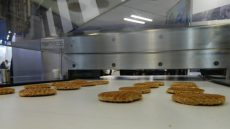Bioplastic switch for Easter egg packaging to power 350,000 homes
Easter eggs generate about 1,200 tonnes of waste in Australia each year, says Australia's Plantic Technologies.
But if all of these eggs were packaged in the firm's water-soluble material, "it would save enough carbon to take 140,000 cars off the road in that period", the Melbourne-based company attests in a recent report.
Driving their green credentials forward, confectioners are increasingly turning to market innovations to reduce their packaging volume.
Last year major players, including Nestle UK, Mars UK and Cadbury UK, signed up to the 'seasonal confectionery industry working group' led by the Waste and Resources Action Programme (WRAP). The group penned an agreement to tackle reductions for the 3,000 tonnes of Easter egg packaging waste produced in the UK each year.
Cadbury UK, for example, has implemented a 25 per cent reduction in packaging across medium shell eggs resulting in 220 tonnes less plastic, 250 tonnes less carton board and an additional 90 tonnes less transit and display packaging.
And parallel to developments in lighter packaging, confectioners are starting to turn to bio-plastics for their packaging needs.
Last year, Nestle UK adopted Innovia’s NatureFlex film – a cellulose made from sustainable wood pulp – for its individual sweet wrappers. The company further announced it had turned to the starch-based plastic packaging from Plantic Technologies.
Plantic, recently listed on the London Stock Exchange, claims its biodegradable plastic can be used as "everyday backyard compost, reducing the impact that plastic has on landfill and global warming".
“Australia produces more than 1.3 million tonnes of plastic every year, that’s more than 71kg for every person. By replacing the traditional way of manufacturing plastic with Plantic’s biodegradable plastic, we could save enough energy to power 17 million homes,” added Brendan Morris, chief executive officer of the Australian firm.
Hurdles to emerging bioplastic market
Trade group European Bioplastics says bioplastics, derived from renewable biomass sources, such as vegetable oil, corn starch or pea starch, make up 0.20 per cent of the total plastic market in the EU, which is estimated to weigh in at 48m tonnes per year.
And a report from Environmental Data Services released earlier this month underlined that obstacles for growth in this emerging market still remain.
One key hurdle, claims the report, is what to do with them once their useful life is over.
“The bottom line is that while many bioplastics do appear to offer substantial environmental gains over conventional materials, much depends on whether they end up being landfilled, incinerated pr composted, and how different environmental objectives are weighted,” said the ENDS report.
While bioplastics that are not incinerated or routed to landfill are likely to be composted and should, in theory, be accepted by composters, often they are not out of concern that they could be contaminated with conventional plastics.
Another option could be anaerobic digestion, whereby the packaging could be fed into digesters together with waste food. But there is still limited capacity for this form of disposal, and many bioplastics manufacturers are still conducting tests.
Hurdles notwithstanding, European Bioplastics projects the bioplastics market in Europe could reach 5m tonnes by 2020, some 10 per cent of the total plastics market today. These figures would require rampant growth in the sector of 35 per cent per year.






